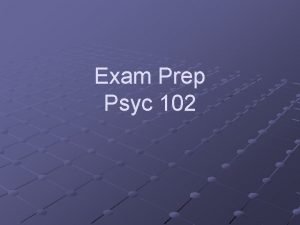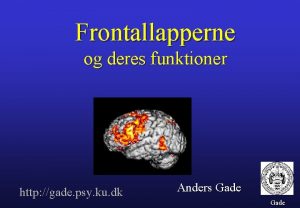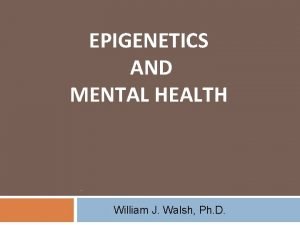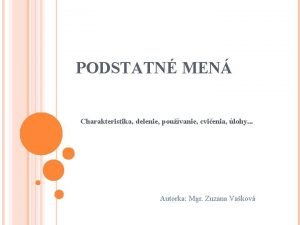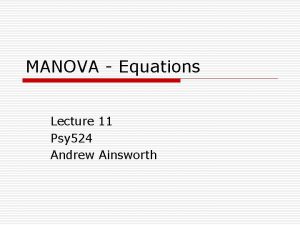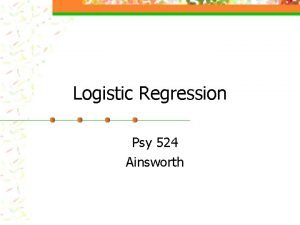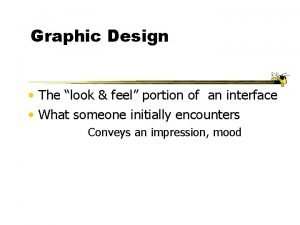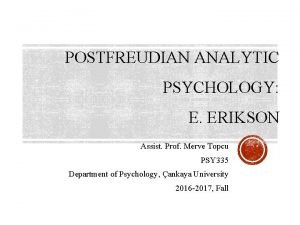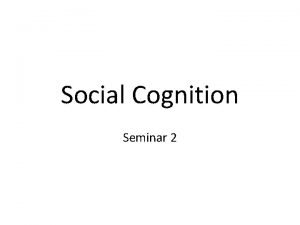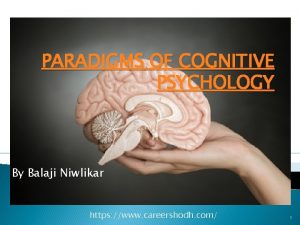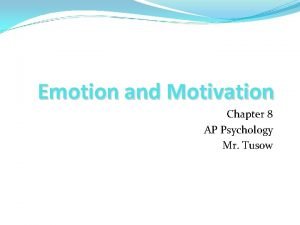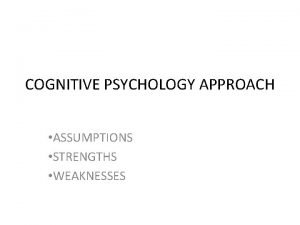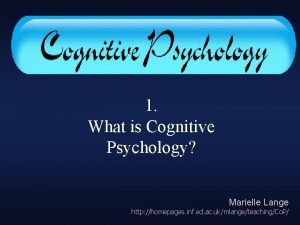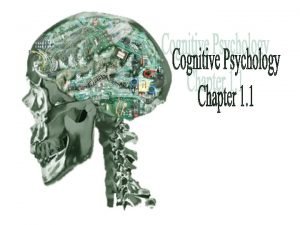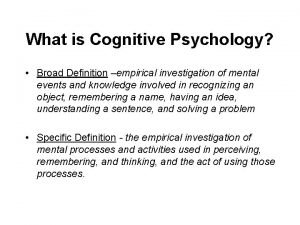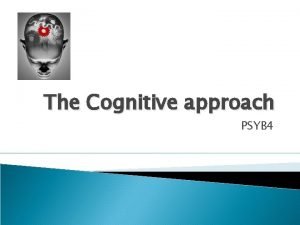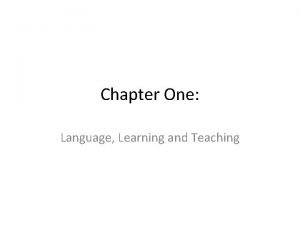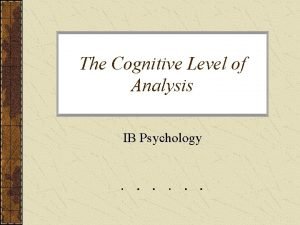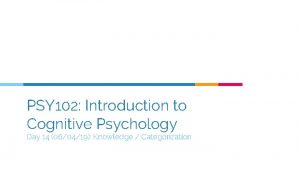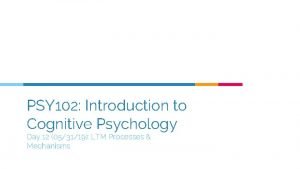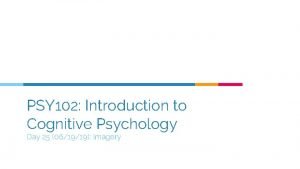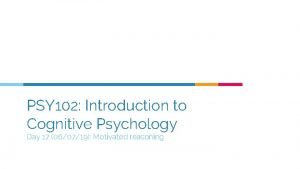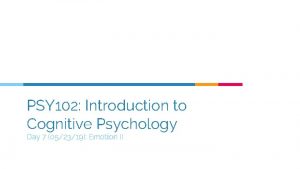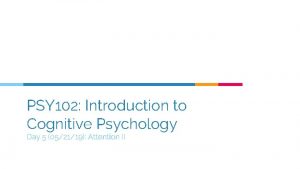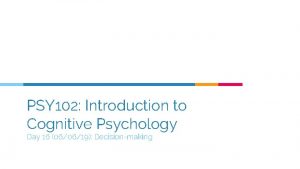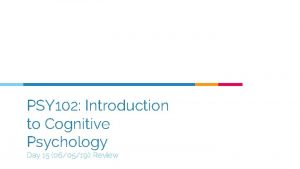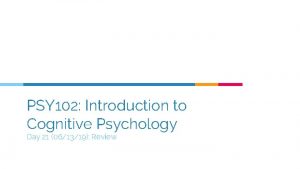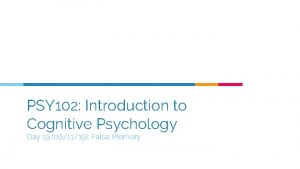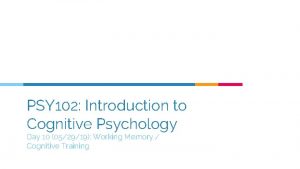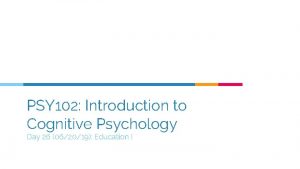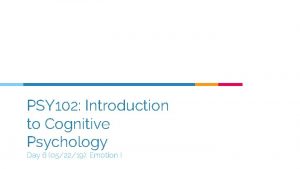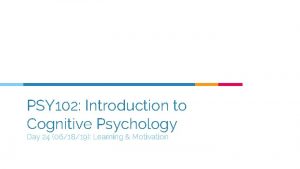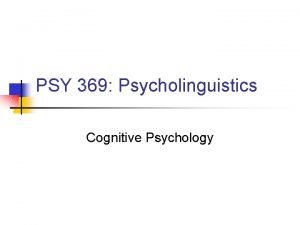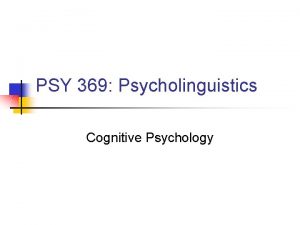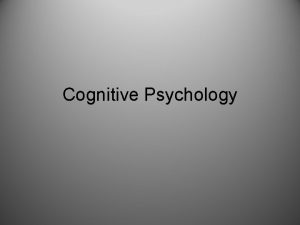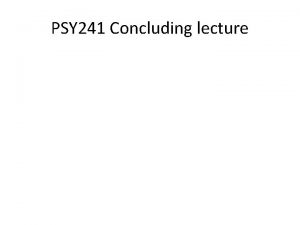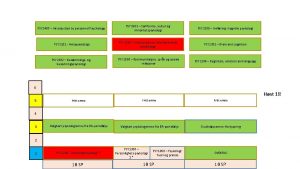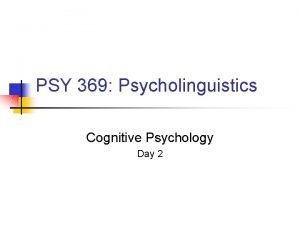PSY 102 Introduction to Cognitive Psychology Day 9











































- Slides: 43

PSY 102: Introduction to Cognitive Psychology Day 9 (05/28/19): Language

Today’s Goals & Agenda 1. LO 1: Continue to build a supportive classroom culture & discuss science communication ○ Handouts on Science Communication Elevator pitches ○ Determine components as a class for rubric on Sci. Comm pitch 2. LO 2: Define, identify, and apply previous constructs that we have discussed in class ○ Quiz on material covered since last quiz: multiple choice and short answer 3. LO 3: Describe the basic fundamental principles of language ○ Discuss real-world implications of language interventions, language theories, and development (e. g. , this) as another subarea in psychology that interacts with cognitive psychology ○ Discuss Goldstein chapter 11 on language as well as recent language research from the Sci. Am article 4. LO 4: Summarize and critically analyze academic journal articles ○ With the language research as our background, we can now discuss the methodology used to infer cognition, language development, etc.

Course Changes ▷ Added more review days ▷ Changed some of the order of topics ▷ Followed suggestions on textbook ○ Syllabus now has suggested textbook readings if you want to follow a textbook ○ Have done a couple of textbook chapters, with + without academic readings

Sci. Comm Elevator Pitches Continue to build a supportive classroom culture & discuss science communication

Sci. Comm Pitches ▷ Read the handout given to you; make notes on what you think (~4 min) ▷ Turn to the person next to you and discuss what you think constitutes a good Elevator pitch (~4 min) ▷ Come together as a class to generate a rubric of guidelines for your Sci. Comm pitch assignment (~4 min)

Language Describe the basic fundamental principles of language Summarize & critically analyze academic journal articles

What are the stakes in language research? https: //www. npr. org/sections/healthshots/2019/04/24/716790281/decoded-brain-signals-could-give-voiceless -people-a-way-to-talk

Predict a Baby’s First Word https: //www. jove. com/video/58445/a-view-their-owncapturing-egocentric-view-infants-toddlers-with-head ~1 minute in Previous research on helping folks with strokes, trauma, neurological disorders… what about developmental disorders? Early language as a predictor of academic achievement? Language delays?

Language Two components: ▷ Hierarchical ▷ Governed by rules

Language Is Universal ▷ Deaf children invent sign language ▷ All humans with normal capacities develop a language and learn to follow its complex rules ▷ Language is universal across cultures ▷ Language development is similar across cultures ▷ Languages are “unique but the same” ○ Different words, sounds, and rules ○ All have nouns, verbs, negatives, questions, past/present tense

Early Perspectives on Language ▷ B. F. Skinner (1957), Verbal Behavior ○ Language learned through reinforcement ▷ Noam Chomsky (1957), Syntactic Structures ○ Human language: in the genes ○ Underlying basis of all language is similar ○ Children produce sentences they have never heard and that have never been reinforced ■ “I hate you, Mommy!”

Psycholinguistics How do humans acquire and process language? ▷ Comprehension ▷ Speech production ▷ Representation ▷ Acquisition

Key Terms ▷ Lexicon ○ E. g. , Atlantic coverage of PNAS study ▷ Phonemes ○ “C”[k] + “A”[æ] + “T”[t] ○ Cat -> Mat; Cat -> Cot; Cat -> Cap ▷ Morphemes ○ Truck: 1 morpheme ○ Bedroom: 2 morphemes

Perceiving Phonemes, Words, and Letters ▷ Phonemic restoration effect ○ Cough, white noise, etc. in the middle of hearing a sentence -- can you fill in the missing phoneme based on context & the portion of a word you heard? ○ Top-down processing

Perceiving Phonemes, Words, and Letters ▷ Difficult to perceive isolated words ○ Context helps; “Did you” “Didja” “Dijioo” ▷ Speech Segmentation ○ Breaking a stream of sounds into words ○ Context, Meaning, Sound & Syntactic rules, Statistical learning ○ “I scream, you scream, we all scream for ice cream”

Perceiving Phonemes, Words, and Letters ▷ Word superiority effect: ○ Letters easier to recognize when in a word ○ Again, context matters ■ FORK, K, RFOK ● Word, letter, nonword conditions ● Compare how quickly people identify one of the letters that was originally presented

Understanding Words ▷ Word frequency effect: ○ Respond faster to high frequency words ○ Lexical decision task ▷ Lexical Ambiguity ○ Words have > 1 meaning ○ Context matters (meaning dominance) ■ River bank ■ First National bank ■ You can bank on it

Demo: Lexical Decision Task ▷ Say “yes” aloud whenever you encounter a word ▷ Raise your hand when you’ve gone through the entire list ▷ Ready?

List 1 Gambastya, revery, voitle, chard, wefe, cratily, decoy, puldow, faflot, oriole, voluble, boovle, chalt, awry, signet, trave, crock, cryptic, ewe, himpola

Demo: Lexical Decision Task ▷ Say “yes” aloud whenever you encounter a word ▷ Raise your hand when you’ve gone through the entire list ▷ Ready?

List 2 Mulvow, governor, bless, tuglety, gare, relief, ruftily, history, pindle, develop, grdot, norve, busy, effort, garvola, match, sard, pleasant, coin, maisle

Demo Debriefing ▷ Were there some words that were easier to say “yes” to? ▷ Think back to “perception”

Semantic Ambiguity https: //www. youtube. com/watch? v=u. Rj 1 RWv. IVI 8

Understanding Sentences Semantics & Syntax: different mechanisms (N 400 - semantics vs. P 600 - syntax) “It was his first day at work. ” (black) “He spread the warm bread with socks. ” (blue) “She put on her high heeled SHOES. ” (purple)

Understanding Sentences Broca’s Area (Frontal lobe) ▷ “Alright… Uh…. stroke and un…. . I…. ” Wernicke’s Area (Temporal Lobe) ▷ “It just suddenly had a feffort and all the feffort had gone with it…” Semantics & syntax are processed differently in the brain (ERP) & by different brain regions

Understanding Sentences ▷ Garden Path sentences ○ “The old man the boat. ” ▷ Temporal ambiguity ○ “The horse raced past the barn fell. ” Ambiguity can be caused & resolved with semantics, information via content in a scene, expectations and experience.

How do you group words in a sentence into phrases? ▷ Syntax-first ○ Grammar structure determines parsing ○ New word is part of current phrase ▷ Interaction of Syntax & Semantics ○ “The spy saw the man with the binoculars” vs “The bird saw the man with the binoculars” ○ Eye movements when revision necessary

Understanding Text & Stories “William Shakespeare wrote Hamlet while sitting at his desk…” ▷ ▷ Inferring meaning beyond the sentence, via past experience Simulating characteristics of images & actions within a story to match situations described Motor cortex activated by action words (simulation) We predict what words would fit with a story (substitution of one word)

How do we converse? ▷ Construct sentences with ○ Old/given information ○ New then becomes given/old ▷ Pretty standard in “science writing” recommendations We also produce speech to achieve common ground and prime each other to recognize certain grammatical structures

Can language influence thought & perception?

Bergelson & Aislin (2017) https: //bergelsonlab. com/bergelson-personal-page. html

Yu et al. (2019)

What about Bilinguals? A contrast to the Hayakawa & Marian (2019) Sci. Am article – long-term validity?

Sci. Comm & Ambiguity Use the next 5 minutes to: ▷ Review a news website of your choice ▷ Look for any headlines, advertisements, or writings that contain unintended ambiguity or imprecision ▷ What are possible interpretations of the writing?

Quiz #2 Define, identify, and apply previous constructs that we have discussed in class

Today’s Goals & Agenda 1. LO 1: Continue to build a supportive classroom culture & discuss science communication ○ Handouts on Science Communication Elevator pitches ○ Determine components as a class for rubric on Sci. Comm pitch 2. LO 2: Define, identify, and apply previous constructs that we have discussed in class ○ Quiz on material covered since last quiz: multiple choice and short answer 3. LO 3: Describe the basic fundamental principles of language ○ Discuss real-world implications of language interventions, language theories, and development (e. g. , this) as another subarea in psychology that interacts with cognitive psychology ○ Discuss Goldstein chapter 11 on language as well as recent language research from the Sci. Am article 4. LO 4: Summarize and critically analyze academic journal articles ○ With the language research as our background, we can now discuss the methodology used to infer cognition, language development, etc.

Tomorrow’s Work ▷ Readings: ○ Kable et al. (2017) - many details that may not feel as relevant or may be tough (modeling); extract what you can ○ Yin et al. (2019) (duke) ○ Noe (2017) & Duong (2019) - Sci. Comm ▷ Assignments: ○ Sci. Comm (written) pitch by 8 a. m. to me ○ On an article you have not already covered

Participation + Minute Paper https: //tinyurl. com/PSY 102 Participation https: //tinyurl. com/PSY 102 Minute. Paper. May 28

Practice Quiz Items Optional: Test Your Knowledge

General Questions ▷ ▷ ▷ Compare & Contrast Skinner vs. Chomsky points of views on how language is learned If given a paragraph, could you identify the different behavioral effects that we’ve discussed? What about examples of how context can affect our perception of language? What are different ways that researchers can measure these behavioral effects? How would you identify the difference between a syntax-first and interactionist perspective on parsing language? What are some ways that you can apply what we’ve discussed today to Sci. Comm?

The word “bad” has ___ phoneme(s). ▷ One ▷ Two ▷ Three ▷ Four

“Kitchen tables” consists of ___ morphemes. ▷ Two ▷ Three ▷ Four ▷ Five

You are conducting a study on how fluency influences the phonemic restoration effect. You study two groups of nonnative English speakers, one with a year of English classes and the other with 10 years. All of your stimuli are in English. Who would you expect to show the greatest phonemic restoration effect? ▷ ▷ The group with one year of English instruction The group with 10 years of English instruction The two groups would show equal phonemic restoration effects Neither group would show an effect because they are nonnative English speakers
 Day 1 day 2 day 3 day 4
Day 1 day 2 day 3 day 4 Day 1 day 2 day 817
Day 1 day 2 day 817 Cognitive and non cognitive religious language
Cognitive and non cognitive religious language Psychology 102 practice test
Psychology 102 practice test Euro psy
Euro psy Ucf psychology tracks
Ucf psychology tracks Psy 2055
Psy 2055 Psy 2055
Psy 2055 Psy 2055
Psy 2055 Psy
Psy Daniel sanin
Daniel sanin Psy
Psy Psy 421
Psy 421 Psy
Psy Psy
Psy Psy 226
Psy 226 Suppose twin teenagers are vying
Suppose twin teenagers are vying Psy academy
Psy academy Psy ku
Psy ku Psy walsh
Psy walsh Najlepsi polovnicky pes
Najlepsi polovnicky pes Padove pripony
Padove pripony 11 psy
11 psy Regression psy
Regression psy Psy
Psy Psy 335 purdue
Psy 335 purdue Cpe102/csc102 introduction to programming
Cpe102/csc102 introduction to programming Self fulfilling prohecy
Self fulfilling prohecy Paradigms of cognitive psychology
Paradigms of cognitive psychology History of cognitive psychology
History of cognitive psychology Yerkes dodson law ap psychology example
Yerkes dodson law ap psychology example Assumptions of cognitive psychology
Assumptions of cognitive psychology Cognitive psychology concepts
Cognitive psychology concepts Cognitive economy psychology definition
Cognitive economy psychology definition Computer metaphor
Computer metaphor History of cognitive psychology
History of cognitive psychology History of cognitive psychology
History of cognitive psychology Cognitive meaning in psychology
Cognitive meaning in psychology Outline and evaluate the cognitive approach
Outline and evaluate the cognitive approach Cognitive psychology crash course
Cognitive psychology crash course Cognitive model psychology
Cognitive model psychology Structural linguistic and behavioral psychology
Structural linguistic and behavioral psychology Hamid zolfaghari
Hamid zolfaghari Emotional events
Emotional events



